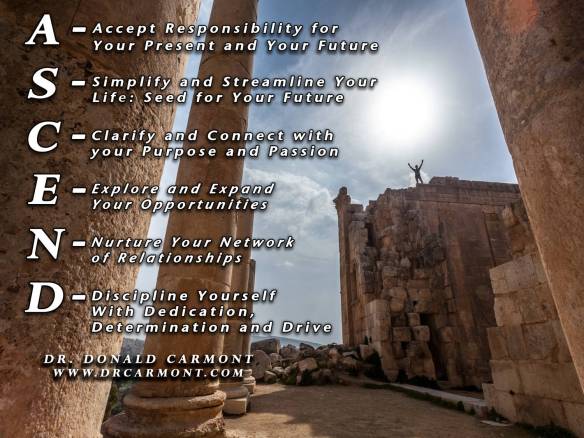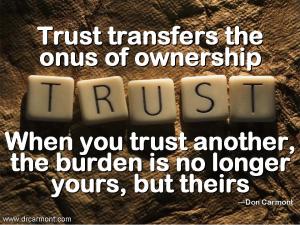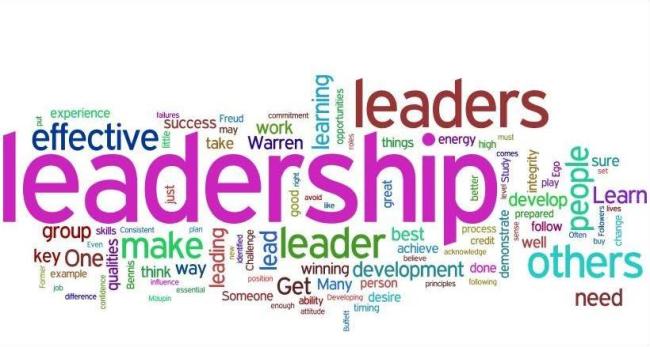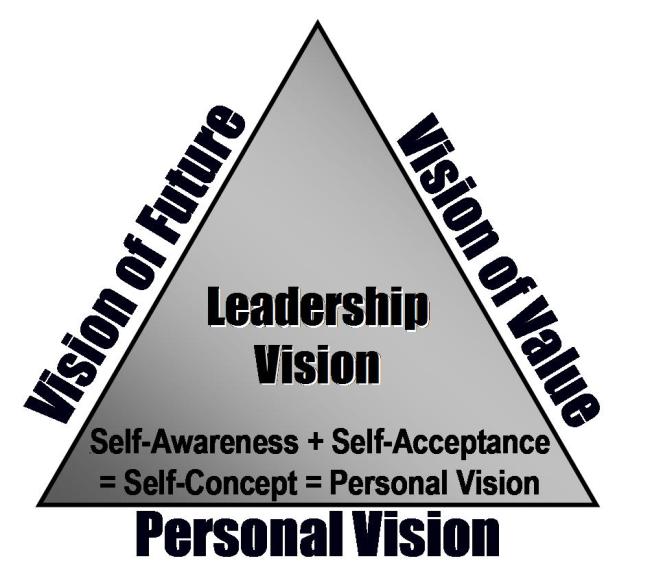
Tough times never last, but tough people do! This title from Dr. Robert H. Schuller’s best-selling book is as relevant today as it was when he first published it more than twenty-five years ago. The current economic downturn has resulted in the jobless rate soaring into the millions in North America and hundreds of thousands of people forced to face harsh economic realities as they have seen their life savings evaporate in a matter of months. Unable to meet their mortgage payments and minimum monthly obligations, many thousands of families have been forced out of their homes while others are hanging on by a thread. While economic pundits and political leaders dish out daily prescriptions for recovery, the average individual is faced with the challenge of surviving a downturn that has devastated their dreams of security, let alone retirement. Hype is no substitute for hope, and while there is more than enough blame to go around, affixing blame doesn’t fix the problem.
Where do you turn and what do you do when faced with the uncertainties of today’s reality? How can you survive the current crisis and prepare for the future? These questions are paramount in the minds of so many…and their answers seem evasive. There is little comfort in knowing that our parents or grandparents went through similar economic crises in the past and survived. This is a different time. You face your own unique pressures and challenges. Are there any answers? Is there a practical solution within your reach?
While I don’t pretend to offer any guaranteed solution or a fail-proof formula, I have drawn from my own experience in the ideas that follow a fundamental game plan that can help you to ASCEND, to rise above the turbulence and tumult of today’s uncertain times. In the construct of the acrostic ASCEND, which stands for Accept, Simplify, Clarify, Explore, Nurture and Discipline, are six core and critical steps that you can take to rise above the downturn.
A-Accept responsibility for your present and your future. The natural tendency when you have lost your job, seen your investments devalued, or face setbacks in your finance, career, personal or professional life, is to point the finger of blame at those you deem responsible for your plight. While this is a natural human response mechanism, it is non-productive.
Fixing blame, fixating on the past, focusing on what “could have been, should have been, would have been, or might have been” is a colossal waste of energy. Blaming the government, the economy, the employer, the market, the Wall-Street sharks, the actions of others, etc., forces you to retreat both mentally and emotionally into the past. As a wise friend once said to me, “There is no future in the past.”
Take ownership of your current reality. The first step is to “own” that you are where you are today because of choices you have made. You will be empowered to prepare for the future when you embrace the reality of your present situation.
In my work as an executive coach, I am often face-to-face with people who have been removed from positions of significant influence and power. In many cases their removal has come about because of their own behaviors or actions. In other cases, they are legitimately the victims of the actions of others. However, in either case, the necessary first step towards recovery that I look for is when the person realizes and honestly states, “I am where I am today because of choices that I made.” This is as true for the individual who finds themselves in an unfulfilling marriage as it is for the person who has been fired from their job.
Assuming responsibility for the current reality is empowering because it enables one to no longer look externally, to focus on other people or events, but to take ownership and seize the initiative that paves the way for the future. Responsibility is actually response-ability. It is the “ability to respond” rather than to react. It is forward and future-focused, as opposed to pulling one back into the past.
Blame, whether targeted towards others or invoked internally, is destructive. Blame and shame travel together when internalized. When blame is externalized, anger and hostility toward others often attend it, while the seething cauldron of internal resentment saps away one’s very life. Only by accepting responsibility for today and tomorrow can you avoid the seductive sabotage of the insidious psychological poison of blame.
Twenty years ago, I went through a period of great loss. After building a successful business in the financial services sector, I experienced the loss of a significant lifetime income. In my panic, I accepted a position that brought me from the west coast to the east coast, and worked for many months, receiving payment in “shares” that proved to be worthless. It was only when the sheriff showed up to evict me from the corporate condo that I woke up the reality that the business relationship and venture with a “trusted friend” was nothing more than an empty promise.
I licked my wounds for a while, went from the “pity pot” to the “pity party” expending my mental energy on “blaming” those that I deemed responsible for my plight. Then one morning I woke up and realized that none of the parties that I blamed for my situation were likely to be thinking about me that day…and that my “backward” focus would not enable me to move into the future. I discovered what it really meant to accept responsibility for today…and for tomorrow.
S-Simplify and streamline your present lifestyle to minimize your commitments. In times of abundance and prosperity we tend to surround ourselves with “stuff.” We are bombarded by the media, feel peer pressure from social groups, and seem compelled to have to have the latest technology, most current fashions, and accumulate “stuff” that we don’t really need. Many people leverage their credit for such acquisitions, and are barely able to meet their minimum monthly payments. Someone once said that “if your outgo exceeds your income, your upkeep will be your downfall.”
The trap of “trappings” is highly seductive in a secular society, and those who succumb to its lure find themselves surrounded with unnecessary possessions that have long since lost their luster, while struggling to meet the payment schedule that they signed onto in better times. Take steps to determine the “nice-to-haves” vs. the “need-to-haves” in your life, and eliminate the clutter of the unnecessary. Strip away the superfluous, reduce your overhead, and simplify your life.
By taking this step, you are afforded an opportunity as well to plant seeds for your future. When you are hard-pressed financially, the ability to give money to charitable causes is dramatically reduced. Therefore, it is unreasonable to expect any economic harvest if you haven’t planted the seed. When you don’t have the substance to support charitable causes with your finance, you can still give away from your “stuff” and by so doing, plant seeds that will bring a harvest to you.
For those who don’t have “stuff” that they can give away, there still remains the opportunity to give of time, talent and service to others. Many charitable organizations are starving for volunteer workers, and would gladly accept your offer to serve them in some way. Charities that are dedicated to providing transportation to the elderly and infirm need drivers. Those that feed the hungry and homeless need servers. Single parents on low incomes or welfare need childcare. The opportunities to seed your future by giving are legion.
Simplifying your life might also mean closing doors on your past that tend to drain you of emotional, psychological and physical energy. As you think about your past, are there broken relationships, friendships that have been fractured or fragmented, where you have yet to achieve closure? Where there are, if you don’t think about those individuals consciously, they remain in your subconscious and show up in your “dream life” at night. Who is there whose forgiveness you need to seek? Who is there whom you need to forgive? The granting and seeking of forgiveness as an act of closure is incredibly empowering. By doing this, you will simplify your life and clarify your focus for the future.
C-Clarify your purpose and your passion. Many people go through life on “cruise-control” without ever having defined their real purpose. If you don’t have a destination, you will have no sense of direction. Often purpose is referred to as “mission” and much attention is given in today’s vast array of self-help literature to establishing goals in various areas of life. Goals are not magical, but they are powerful. They create what one author referred to as a “true-north” on your internal compass. They provide you with a sense of direction that enables you to do course-correction when you sense that you are off track.
Purpose, however, is bigger than goals. If goals furnish a “magnetic pull” towards your destination, purpose is the “north pole” to which your goals align. Purpose answers the bigger question of “Why am I here on this planet?” and “What is the reason for my existence?” No one was more surprised than Rick Warren himself that his book, “The Purpose Driven Life” would soar to become a best seller, and result in his multiple appearances on Larry King, hosting a presidential debate, and offering an invocational prayer at the president’s inauguration. Warren cuts through the jargon of self-help hype to clarify in concrete terms the true purpose for human existence. During times of prosperity and plenty, it is easy to forget about our larger purpose in life. Clarify your real life purpose and take inventory of your goals, objectives, and priorities and bring them into alignment.
Having clarified your purpose at a macro level, now seek to clarify it at the micro level. As a steward of the gifts, talents, skills and abilities that you have, seek to invest and deploy them where they will yield the greatest results…and don’t just measure those results in monetary terms. There are values that transcend monetary value. What is it that you truly value in life? Are your activities in alignment with those values?
Several years ago I terminated an employment contract that provided my basic bread and butter because I could no longer represent the organization with integrity. The organization was not involved in anything illegal, or immoral. In fact, their business was in alignment with my mission and purpose in life. However, some of their internal practices were out of sync with my own values. After terminating the contract, I looked at a blank calendar, not knowing where my income would come from the following year. At the same time, I made a commitment to myself and to God to mentor without charge the first two people who asked me to do so. Within a couple of weeks, two individuals approached me and asked if I would mentor them. When they asked what my fees would be, they were both shocked to hear me say, “Nothing.” For one individual this was good news, since he didn’t have the financial means to pay me. For the second this was unacceptable, and he insisted on paying for my time and counsel. An interesting side note to the story is that over the next year my income doubled from the previous year, and doubled again the following year.
To clarify your purpose at a micro level, determine what your real passion is. The old saw, “Do what you love and the money will follow” is tried, tested and true. If you didn’t need to earn an income, what would you love to do? Of all the jobs you’ve had in the past, which were most enjoyable? Of all the tasks and activities you’ve done in your work life, which did you enjoy most? When you clarify your passion, you’ll easily align with your purpose. The combination of your “total talent” DNA defines your specific purpose, and when you are working in the “sweet spot” of your “passion place” you will discover your purpose.
When you’ve identified your passion and purpose, determine who might value the services that derive from your passion. Find a way to develop these and market them to others. What can you do that you love doing that others will pay you to do? What have you always wanted to do but never had time or opportunity to pursue? If you do what you love, you will do it with excellence, and others somewhere will value what you do. Find a way to turn your passion into livelihood.
E-Explore and expand your opportunities. Some might make the quantum leap from what we’ve just described to believing that once you’ve aligned your purpose and passion, that people will beat a path to your door, and that your phone will start ringing off the wall. This is not the case! The onus is upon you to explore every opportunity that presents itself, and to pound the pavement if necessary, and to knock on doors until you find one that’s open.
In much of our industrialized and unionized workplaces, people quickly develop a sense of entitlement, and believe that the employer owes them because they “gave twenty years to that job.” This legacy of yesterday’s work world is no longer today’s reality. Loyalty is its own reward. Corporations don’t owe employees a future. This mentality transfers responsibility from the individual to an external source and renders them powerless in their careers and impotent in life. Now, more than ever, people need to hearken to the message that has been heralded for at least two decades by leaders in the entrepreneurial world of business, that ownership for career and professional development belongs to the individual employee and not the employer.
From recent studies that I’ve pursued around innovation and creativity, it is patently clear that “building a better mousetrap” does not guarantee success. Innovators have to promote and push their product into what is often a crowded marketplace over-populated with competitors, all of whom are vying for the same coveted dollar.
Similarly, it is incumbent on you to vigorously and rigorously pursue every opportunity that presents itself. You might have to “do what you love” free a few times before someone puts a value on it and is willing to pay for your services. You will undoubtedly have to do things you find distasteful while pursuing a path for your passion. Take a job that you believe you’re overqualified for and become a servant to others wherever you can. If you can’t find “work” consider job-hunting as a full-time job, and pursue any and every opportunity relentlessly. Knock on doors until your knuckles are sore and bleeding…then change hands. Beat the pavement until you have holes in your soles…then change shoes.
If my statements above seem callous or harsh…they are not. They come from a place of experience. And I’ve had to do it more than once in my life. I know what it is to send out hundreds of resumes, to receive countless rejections, to knock on doors and be turned away.
N-Nurture your network of relationships. If you know of someone who could use your help but can’t afford to hire you right now, offer to volunteer your services for a few hours a week. Explore your current network and look for ways to expand it. Chances are your network is much vaster than you might at first realize. Think of the various social groups, church groups, parachurch groups, professional associations, and family networks where you have connections. Sit down and write out every relationship that comes to mind and begin to construct a map of those relationships. As other names come to mind, jot them down. Who do you know from past work experiences, places where you do business, where you are a customer, customers you have served in previous jobs? Where have you planted seeds of kindness in the past? For whom have you done favors? Who have you met where you felt a connection?
Over the years I’ve discovered that there are some individuals that I only hear from when they need something. Yet, I’m still pleased to hear from them when they contact me. Strategically, that is for the long haul, purpose not to be that kind of person. Make sure that you cultivate and nurture relationships when you don’t need the assistance of the individual. Value them for their sake. Give them of your time. That way, should you ever need to call upon them, they will be predisposed to want to assist you in any way possible. However, make sure that you don’t cultivate relationships with people just because you might need them in the future.
For the short-term, don’t allow the fact that you have neglected to nurture a relationship to prevent you from re-connecting. Contact people you’ve not heard from or talked to in some time. If you’ve been remiss in not maintaining communication, acknowledge that and ask for forgiveness. Someone you know may know someone who knows of an opportunity where you will be the perfect fit. Follow up on contacts you’ve made in recent years. You never know when and where an opportunity might surface.
D-Discipline yourself with dedication, determination, and drive to persistently and patiently persevere in your journey in spite of the discouragements that you will encounter along the way. Throughout your entire process, you will find some of the obstacles you face to be daunting. You will battle internal resistance to accepting responsibility for your past and your future. You may reluctantly give up the need to “blame others” and find yourself continuously pulled back into the past when memories are still fresh or when situations arise that resurrect past injuries. The battle of the will is one of the toughest that you will ever face. But you must stay with it. One of my closest friends loves to quote his grandfather who once told him as a little boy, “The difference between doing it and not doing it is doing it!”
As you seek to streamline and simplify your life, it will take sheer determination to give up comforts to which you have become accustomed when you decide that they are “nice to have” and not really “need to have.” When you begin to give to others, even out of your need, your generosity may not be met with appreciation.
As you seek to clarify your purpose and your passion, it may seem obscure at first, and a difficult process, especially when you are feeling the pressures the economic realities of your daily life. You have to stick with it. When you begin to explore opportunities and knock on doors, you will have some of them slam in your face. Keep knocking. As you invest time and energy in nurturing your network by contacting people you’ve met or haven’t heard from in some time, be prepared for disappointment. Some will dismiss you, and others will not “remember you.” But keep doing it.
During this process, you will develop one of the greatest character strengths that will define who you are: resilience. Persistence is a behavior; resilience is a quality of character. But just as “tribulation produces patience”, so “persistence creates resilience.”
Resilience is that quality that enables one to be knocked down without being knocked out. It is the ability to get back up and start again. It is a quality that I learned from my father.
With only a grade six education, job opportunities for my father were limited. He worked in the woods, construction sites, or whatever he could find to do. This provided a living for his small family until he experienced an accident that severely limited his physical ability. While working on a construction site, he fell thirty feet from a staging onto a rock pile, breaking his back in several places. Without appropriate medical care, his back never healed properly. And with no worker’s compensation or healthcare, he found himself unemployed, unemployable, and with no means to support his wife and four small children.
His mother sent him second-hand clothes in the mail that she had washed and ironed. He took them door-to-door and sold them. With a pocketful of change, he hitchhiked into the city and purchased hair-nets and bobby-pins, which he in turn peddled door-to-door. My dad became a peddler…hauling his goods on a bobsled in the winter, and from a bicycle in the summer. Eventually, he bought a second-hand car, purchased his merchandise from a wholesaler, and sold his goods door-to-door. After many years as a peddler, he opened a storefront…and when he passed away was able to leave my mother comfortable for the remainder of her days. I saw him labor in excruciating pain, often threatened by bankruptcy in his business, frequently discouraged…but always resilient.
Hard times call for hardiness. But hard times also create hardiness. You can ASCEND in a downturn. Accept responsibility for today and tomorrow, simplify your life, clarify your purpose and passion, explore every opportunity, nurture your relationships, and discipline yourself with total dedication. If you do these things, you will ascend.





















